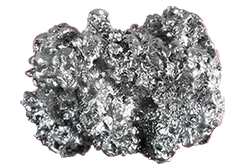Precious Metals
Picking A Precious Metal For Your Engagement Ring
Typically, you would place a great deal of importance on the centre diamond for your engagement ring. It is also important however to choose a precious metal that will complement the diamond, as well as the design and style of the ring. While it may be a matter of personal taste, the one thing to remember is that the colour of the metal should enhance the colour of the diamond. For instance, a very white diamond for example will appear whiter against a white metal while a diamond with traces of yellow may look more yellow in a white setting or may look whiter when set in a yellow gold.
Yellow Gold
Yellow Gold is perhaps the most popular precious metal used in jewellery. Softer malleable metal, easy to polish and repair, it resistant to rust and tarnish it has a richness in colour and heritage. Gold itself varies in purity, ranging from 9K, 14K, 18K, 22K and 24K, with 24K being pure gold. Gold becomes increasingly more vivid in colour as the purity increases, but at the same time it becomes softer and becomes less suited to jewellery. For this reason, other metals are mixed into the gold to increase its strength and durability. 18K gold is recommended for use in jewellery, it consists of 75% gold with the remaining 25% being a combination silver and copper. 18K gold provides to best compromise between colour, lustre and strength.

White Gold
White gold is a very popular choice for engagement and wedding rings. It is superficially similar in appearance to platinum. White gold is an alloy of gold and one or more white metals, such as nickel, manganese and palladium. White gold in jewellery is typically plated with rhodium to give it its intended white appearance and lustre, which may otherwise be dull. This also helps against metal allergy. This rhodium plating can wear off over the course of time, for which the jewellery will require a simple rhodium re-plating.

Rose Gold
Rose gold (sometimes called Red Gold) is a precious metal that results from gold alloys with a greater percentage of copper. For 18K gold the mixture is 75% gold and 25% copper. Various hues of pink and red can be created by changing the composition of the metal alloy.
Platinum
Platinum is the strongest among the precious metals and lasts a lifetime does not wear away composed of 95% platinum and 5% other pure alloys, is also hypoallergenic. It is considerably denser than gold and its natural white sheen enhances a diamond’s brightness. Due to its greater density, a platinum ring will be roughly 30% heavier than a gold ring of equal size. Unlike most gold used in jewellery, the platinum used is 95% pure. It is frequently alloyed with Cobalt or Iridium or Palladium or Rhodium or Ruthenium for the remaining component of the metal.

Titanium
Titanium is one of the strongest metals by weight and has only come into use in much more recent times as a precious metal for use in jewellery. Much like platinum, it is hypoallergenic and resistant to corrosion. Titanium rings are cast from metal and are then anodized to give them their intended colour and sheen.


